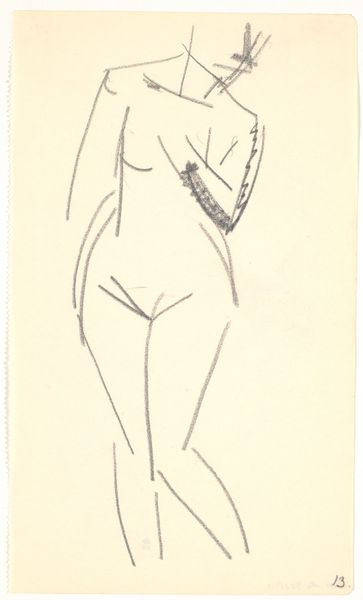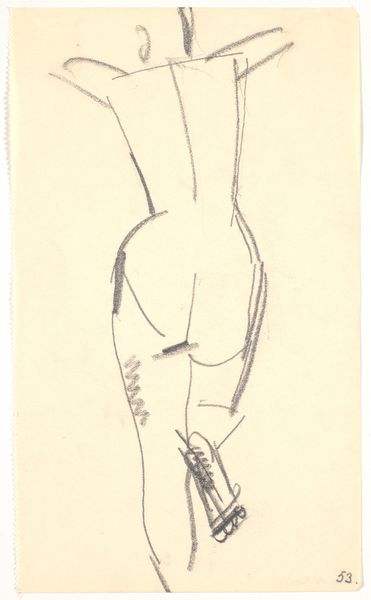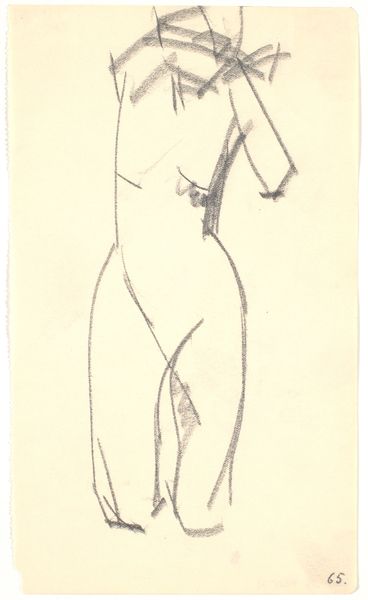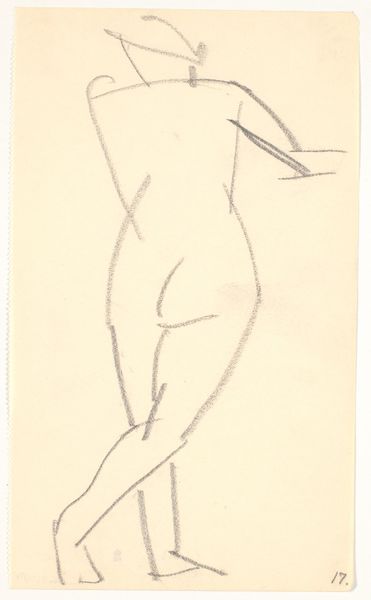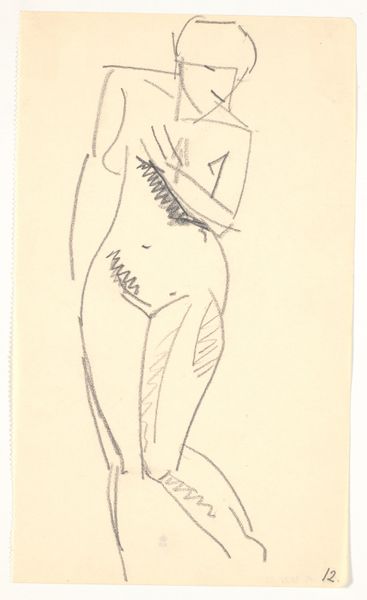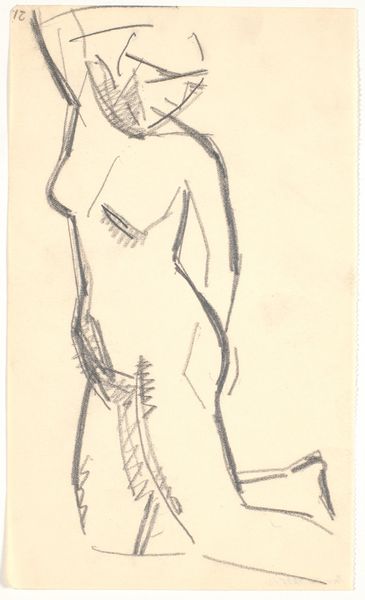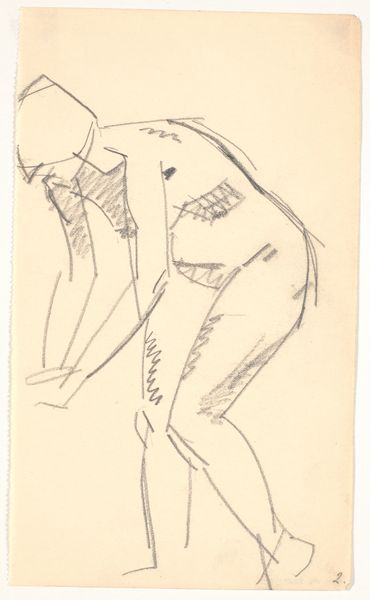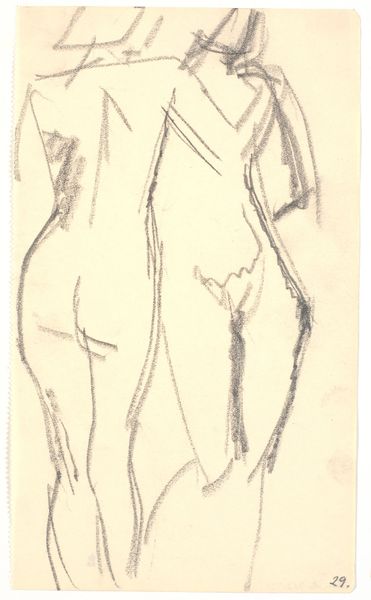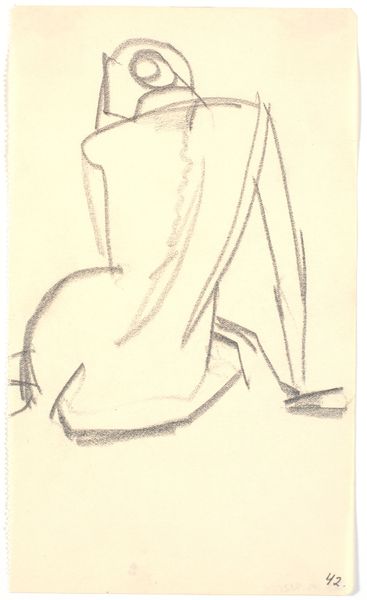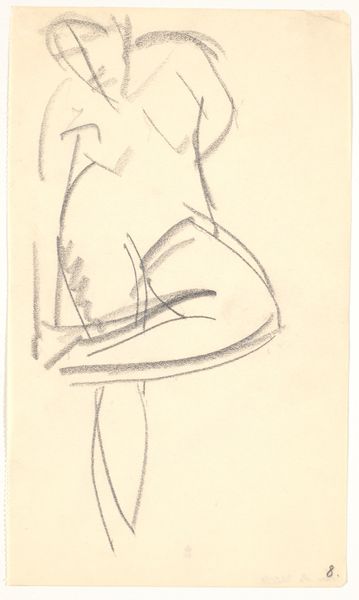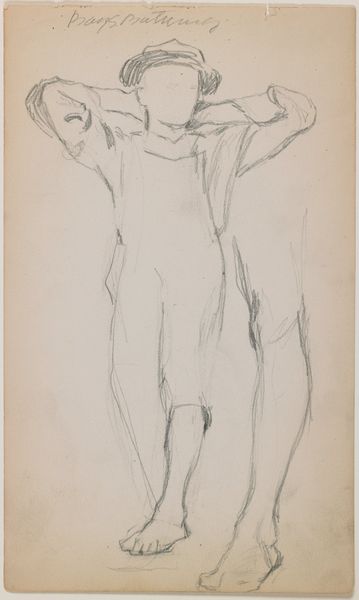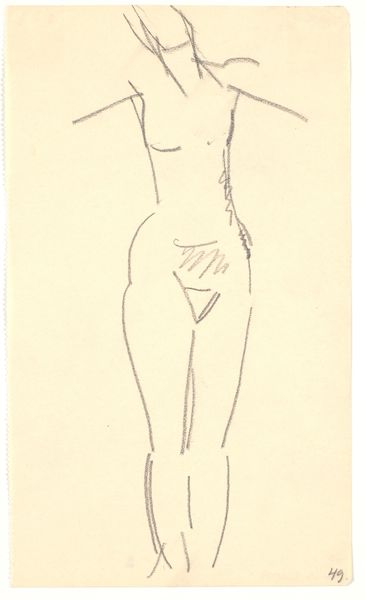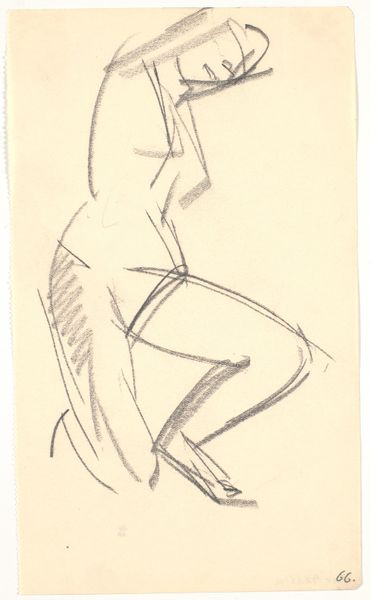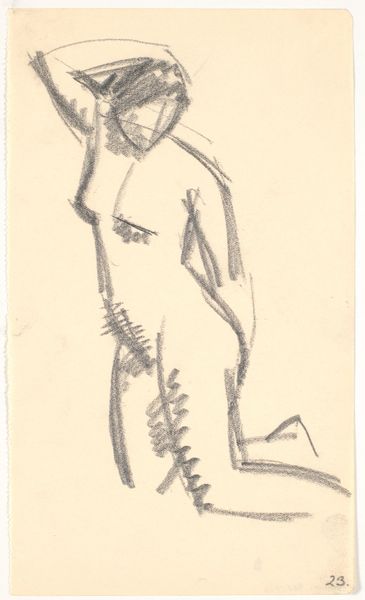
drawing, graphite
#
portrait
#
drawing
#
figuration
#
graphite
#
modernism
Dimensions: 209 mm (height) x 124 mm (width) (bladmaal)
Curator: This graphite drawing, titled "Stående model, set bagfra"—"Standing Model, Seen from the Back"—was created by Karl Isakson, likely between 1914 and 1915. It’s currently held in the collection of the SMK, the National Gallery of Denmark. Editor: The lines are so economical! Almost brutally efficient in describing form and space. I get a sense of immediacy, a quick study of the body in motion, captured in graphite. Curator: The pose does convey movement, doesn't it? The tilt of the shoulders and the slight bend of the leg certainly hint at a figure shifting its weight. It reminds me of classical contrapposto, that enduring trope representing relaxed naturalism—but reduced to its absolute essence. Isakson seemingly distilled the motif of an idealized figure. What’s retained or even exaggerated through this stylistic distillation? Editor: I'd suggest Isakson is after something purely visual, and perhaps a comment about that artistic drive. The sharp angles contrasted with the curves, the light and shadow implied rather than explicitly drawn, this emphasizes structure and its spatial relationship. There is, simultaneously, this absence of defining detail. It’s representational but almost teetering into abstraction. I get this impression, and can't avoid this symbolic, interpretive move toward what constitutes the essence of observation. Curator: Interesting perspective. In the cultural memory that I observe, these figures can often represent universal ideas. The simplification allows the viewer to project more readily. Consider the exposed neck, in some symbolic registers the literal backbone is perceived as a potent symbol of vulnerability and strength, perhaps exploring an ambivalent stance on the subject of observation itself? I observe this connection from the way these symbols echo in a different format centuries apart, whether in sculpture or modern line drawings. Editor: A vital point! Considering the artist's decisions regarding line weight and areas left completely untouched allows a more expansive appreciation for the artwork. I'll take note of those details on my next viewing, too! Curator: This dialogue is a way for viewers to more immediately register both subjective emotions and to see visual and cultural symbols and memories that they are seeing for the first time. Editor: Indeed, appreciating how technique and representation interact is the first step towards accessing an image’s deeper meanings.
Comments
No comments
Be the first to comment and join the conversation on the ultimate creative platform.
